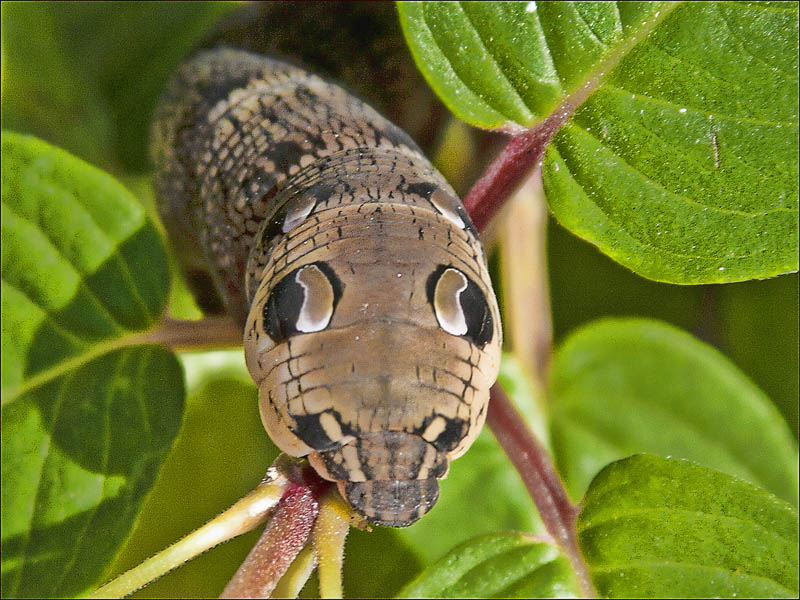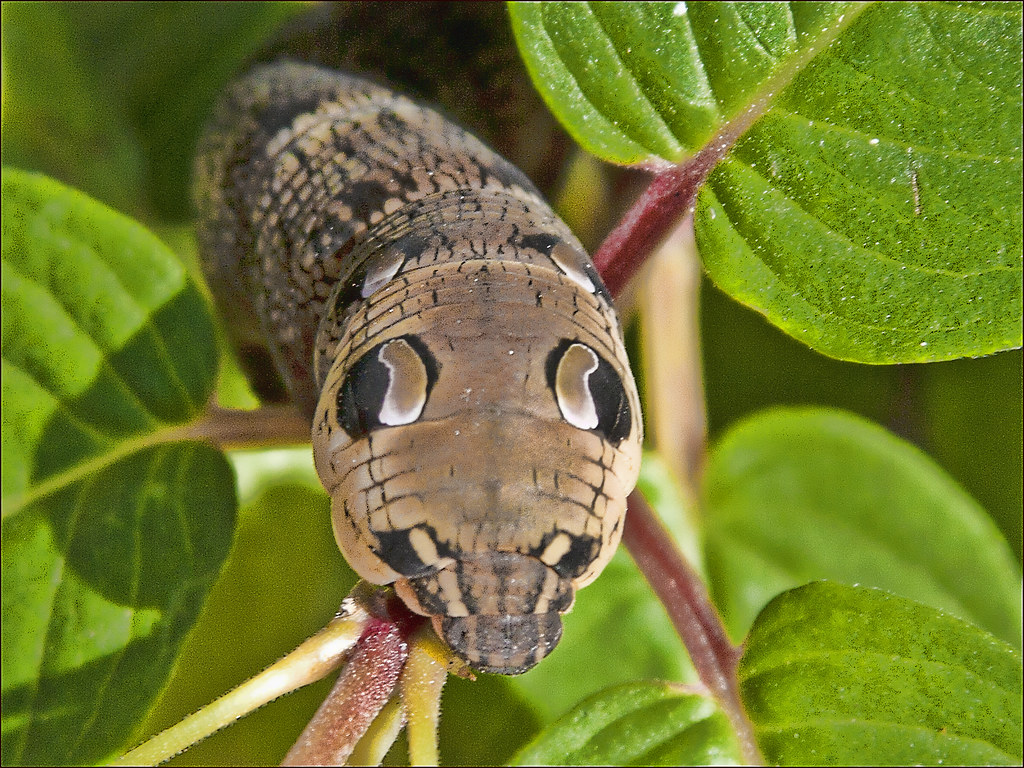Deilephila elpenor, known as the Elephant Hawk-moth, is a large moth of the Sphingidae family. The species is found throughout Britain and Ireland. Its range extends across Europe, Russia, and into China, northern parts of the Indian subcontinent, Japan and Korea (though not Taiwan). Introduced specimens have been found in British Columbia. In most of their range, the adults are seen from May to July and the caterpillars from July to September, when they pupate. However in some parts of the Mediterranean and China the adults may be seen from April on, sometimes having two broods in a year. [Source]
The larva is about 75 millimetres (3.0 in) long, green and brown in colour. Like most hawk moth caterpillars, they have a backward curving spine or “horn” on the final abdominal segment. The anterior of the caterpillar appears to have the shape of a trunk-like snout. It is this elephant look, rather than its large size, that gives the moth its name. When startled, the caterpillar draws its trunk into its foremost body segment. This posture resembles a snake with a large head and four large eye-like patches. Caterpillars are preyed upon by birds, but these shy away (at least for some time) from caterpillars in “snake” pose. It is not known whether the birds take the caterpillar to actually resemble a snake, or are frightened by the sudden change of a familiar prey item into an unusual and boldly-patterned shape. [Source]
This species possesses good night or scotopic vision. Its eye includes two different kinds of ommatidium; each contains nine light sensitive cells, of which seven contain a pigment whose absorption spectrum peaks in the green part of the spectrum, but in one type the remaining two receptors have peak absorption in the blue and in the other type they have peak reception in the ultra violet. The moth therefore has the cellular prerequisites for trichromatic colour vision. Adults have been shown to be capable of making colour discriminations at night-time levels of illumination, and they sustain these discriminations despite changes in the spectral content of the incident light; that is, they show colour constancy. [Source]
The imago (adult) feeds at night, and often takes nectar from garden plants like Honeysuckles (Lonicera) and petunias, so it is quite often seen in urban settings in the evening. The moth typically has a wing span of 50–70 mm (2.0–2.8 in). It is spectacularly coloured, seeming to shimmer with green and red when in motion. The adult moths are eaten by some species of bats. [Source]
If you enjoyed this post, the Sifter highly recommends:

